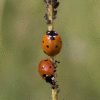A guide to area-restricted search: a foundational foraging behaviour
- PMID: 35821610
- PMCID: PMC9796321
- DOI: 10.1111/brv.12883
A guide to area-restricted search: a foundational foraging behaviour
Abstract
Area-restricted search is the capacity to change search effort adaptively in response to resource encounters or expectations, from directional exploration (global, extensive search) to focused exploitation (local, intensive search). This search pattern is used by numerous organisms, from worms and insects to humans, to find various targets, such as food, mates, nests, and other resources. Area-restricted search has been studied for at least 80 years by ecologists, and more recently in the neurological and psychological literature. In general, the conditions promoting this search pattern are: (1) clustered resources; (2) active search (e.g. not a sit-and-wait predator); (3) searcher memory for recent target encounters or expectations; and (4) searcher ignorance about the exact location of targets. Because area-restricted search adapts to resource encounters, the search can be performed at multiple spatial scales. Models and experiments have demonstrated that area-restricted search is superior to alternative search patterns that do not involve a memory of the exact location of the target, such as correlated random walks or Lévy walks/flights. Area-restricted search is triggered by sensory cues whereas concentrated search in the absence of sensory cues is associated with other forms of foraging. Some neural underpinnings of area-restricted search are probably shared across metazoans, suggesting a shared ancestry and a shared solution to a common ecological problem of finding clustered resources. Area-restricted search is also apparent in other domains, such as memory and visual search in humans, which may indicate an exaptation from spatial search to other forms of search. Here, we review these various aspects of area-restricted search, as well as how to identify it, and point to open questions.
Keywords: foraging mode; intensive search mode; marginal value theorem; memory search; optimal foraging.
© 2022 The Authors. Biological Reviews published by John Wiley & Sons Ltd on behalf of Cambridge Philosophical Society.
Figures
Similar articles
-
Adaptive Lévy processes and area-restricted search in human foraging.PLoS One. 2013;8(4):e60488. doi: 10.1371/journal.pone.0060488. Epub 2013 Apr 5. PLoS One. 2013. PMID: 23577118 Free PMC article.
-
Spatial memory in foraging games.Cognition. 2016 Mar;148:85-96. doi: 10.1016/j.cognition.2015.12.015. Epub 2016 Jan 2. Cognition. 2016. PMID: 26752603 Clinical Trial.
-
A general model of forager search: Adaptive encounter-conditional heuristics outperform Lévy flights in the search for patchily distributed prey.J Theor Biol. 2018 Oct 14;455:357-369. doi: 10.1016/j.jtbi.2018.07.031. Epub 2018 Jul 24. J Theor Biol. 2018. PMID: 30053387
-
Liberating Lévy walk research from the shackles of optimal foraging.Phys Life Rev. 2015 Sep;14:59-83. doi: 10.1016/j.plrev.2015.03.002. Epub 2015 Mar 20. Phys Life Rev. 2015. PMID: 25835600 Review.
-
Foraging behavior in visual search: A review of theoretical and mathematical models in humans and animals.Psychol Res. 2022 Mar;86(2):331-349. doi: 10.1007/s00426-021-01499-1. Epub 2021 Mar 21. Psychol Res. 2022. PMID: 33745028 Review.
Cited by
-
When complex movement yields simple dispersal: behavioural heterogeneity, spatial spread and parasitism in groups of micro-wasps.Mov Ecol. 2023 Mar 1;11(1):13. doi: 10.1186/s40462-023-00371-8. Mov Ecol. 2023. PMID: 36859387 Free PMC article.
-
Collective search in ants: Movement determines footprints, and footprints influence movement.PLoS One. 2024 Apr 23;19(4):e0299432. doi: 10.1371/journal.pone.0299432. eCollection 2024. PLoS One. 2024. PMID: 38652728 Free PMC article.
-
How do red foxes (Vulpes vulpes) explore their environment? Characteristics of movement patterns in time and space.Mov Ecol. 2025 Jan 16;13(1):4. doi: 10.1186/s40462-024-00526-1. Mov Ecol. 2025. PMID: 39819801 Free PMC article.
-
Targeting fin whale conservation in the North-Western Mediterranean Sea: insights on movements and behaviour from biologging and habitat modelling.R Soc Open Sci. 2024 Mar 6;11(3):231783. doi: 10.1098/rsos.231783. eCollection 2024 Mar. R Soc Open Sci. 2024. PMID: 38455994 Free PMC article.
-
Foraging with your eyes: a novel task to study cognitive strategies involved in (visual) foraging behaviour.Cogn Process. 2025 Aug;26(3):541-554. doi: 10.1007/s10339-025-01261-0. Epub 2025 Feb 21. Cogn Process. 2025. PMID: 39982677 Free PMC article.
References
-
- Adler, F. R. & Kotar, M. (1999). Departure time versus departure rate: how to forage optimally when you are stupid. Evolutionary Ecology Research 1, 411–421.
-
- Anderson, H. , Braestrup, C. & Randrup, A. (1975). Apomorphine‐induced stereotyped biting in the tortoise in relation to dopaminergic mechanisms. Brain Behavior and Evolution 11, 365–373. - PubMed
-
- Bailey, H. , Lyubchich, V. , Wingfield, J. , Fandel, A. , Garrod, A. & Rice, A. N. (2019). Empirical evidence that large marine predator foraging behavior is consistent with area‐restricted search theory. Ecology 100, e02743. - PubMed
-
- Bainton, R. J. , Tsai, L. T. Y. , Singh, C. M. , Moore, M. S. , Neckameyer, W. S. & Heberlein, U. (2000). Dopamine modulates acute responses to cocaine, nicotine, and ethanol in Drosophila . Current Biology 10, 187–194. - PubMed
Publication types
MeSH terms
LinkOut - more resources
Full Text Sources


